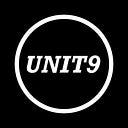
How do you turn water into a 3D moving figure?
We ask UNIT9 Films Director, Cole Paviour
To launch Gatorade’s newest low calorie electrolyte water G Active, UNIT9 collaborated with TBWA\Chiat\Day, to make a film that has made waves in the industry.
In less than 10 weeks, using more than 5000 man hours, we created a life-sized animated human made entirely from liquid. Which moves and interacts with physical space like a real human.
We caught up with film director Cole Paviour to talk about his inspiration for the project, how to control water droplets at an infinitesimal level and, of course, Terminator 2.
Where did you get inspiration from for a project like this?
This project was very unique for me in that a lot of inspiration was born out of the challenge and execution itself. Looking to existing tech and design, such as the work of Shiro Takatani, certainly got the creative juices flowing with regards to the the rig itself — and spurred on my thinking in terms of how to generate something that delivers far greater resolution, perfectly formed, and within a millisecond. That initial leap frogging helped to set the goal posts.
But my inspiration largely stemmed from childhood, and a lifetime passion of practical effects. I grew up on Jim Henson creatures and Ray Harryhausen stop-motion animations, and my imagination was stoked by these effects and techniques. So I wanted to create the same sense of magic that was instilled in me as a bright-eyed, bushy-tailed whippersnapper.

That said, I was also exposed to the advent of cinematic CGI, as pioneered by ILM and the likes of James Cameron with The Abyss and Terminator 2. While I have misgivings about how CG is generally used, and how it’s increasingly overused, these movies blew me away. There’s something incredibly powerful about art pushing science to deliver on the ambition of imagination. I think it’s palpable, and really translates. So that too really gets you fired up.
In fact, the T-1000 in metallic form, sprinting through an underground car park actually became an early look reference, as it was actually a very tricky idea and visual to initially communicate to client (given the technology didn’t exist yet). I’d said something like; “So it’ll look like this, only not CG; but instead made of a 3D matrix of real water droplets, and female — oh, and minus the whole weird, frowning, constipated robot-killing-machine-from-the-future vibe”. Nobody wants to be selling one of those. Yet. Needless to say, it worked a charm.
During production what kept you up at night?
Being responsible for a million dollar science experiment that might not work. Although this was a reasonably lengthy schedule for a commercial job, a tight timeframe for R&D would have been two years. The team had just 10 weeks.



So it’s unsurprising we were still problem solving the rig, fixing resolution issues, working out matrix-splice coding, re-programming motion control (and more) on day two of the shoot. The knock-on effect obviously being we start losing animation frames as a result.
Thankfully, every single member of the team worked tirelessly to get us over the line — and without a single frame sacrificed — which proves just how much they were able to ultimately master this new technology and our execution.
Tell us about the technology connecting the motion capture with the actual water figure.
Bespoke software was written that could ingest any 3D shape, and then splice it into layers — with each layer being an on/off command to the rig’s entire 2,048 solenoids. Every millisecond. That’s a whole lot of digital information being shot through the rig at a ridiculous speed.
The software gave us a lot of control, particularly when it came to the resolution of the water woman. We could shift the 3D mocap’s XYZ position or even re-scale it, which meant we always got the most res possible out of the rig. We always had a mid-air sweet spot to find in terms of its position, due to gravity causing each of the droplets to accelerate — so this was an ongoing battle throughout the project.
We also had to offset each nozzle’s solenoid release for every image splice/layer, as this was the only way we could counteract the distortion that droplet acceleration caused; i.e. the first layer of droplets would separate at a greater distance the further they travelled, making the feet really stretched out by comparison to a shrunken head. So without this kind of control the project would have been untenable.
The ability to scale was a massively important feature built into the workflow. Essentially, it enabled us to scale the water woman in relation to the type of shot we were going for. For example, when shooting a close-up of her feet running, we used the entire length of the rig to deliver a greatly up-scaled animation asset — meaning we had more droplets, and thus more ‘pixels’, giving much greater character resolution.
Your one tip for another director attempting a similar feat
Leave well alone pal, imitation’s a mugs game.

